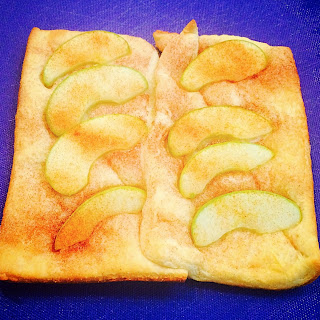Did you know that it takes 14 times to try a new food before one can say that they truly don’t like it? This is one of the things I tell both parents and children when they start any type of feeding therapy. Almost everyone has been around a “picky” eater, but what is really going on? Once medical issues have been ruled out, picky eating usually stems from either a behavioral difficulty, an oral motor challenge, a sensory challenge or a combination of these areas.
 |
| Photo courtesy of Risa Nasatir |
Behavior difficulties can include a child who will not sit at the table or a child who engages in negative behaviors at the table such as throwing food or crying. Oral motor challenges include difficulty chewing or moving the lips, tongue or jaw. Abnormal swallowing patterns can also affect efficiency of eating, which in turn can cause a negative experience during meal times. Negative experiences can also occur as a result of sensory feeding problems. Sensory challenges include getting upset at the sight or smell of food, and difficulty touching or tasting foods. The good news is there are many different therapeutic techniques based on long standing research that work to address atypical “picky eating.”
One of the first steps to determine if this is just typical “picky eating” vs a feeding challenge is to reflect on how you react to your child’s behavior. In our society eating is a form of social interaction and a sign of love. As caregivers and parents, it is our job to provide the food and the setup for a successful experience. It is up to the child to decide whether they will eat. Often, the most difficult realization occurs when we realize that we can't just get our child to “take a bite” or “try it.” A child must have their own desire to try new foods and it begins by building trust and being able to integrate the sensory and oral motor experience of eating.
Second, it is important to read your child or baby’s signs. Perhaps they are telling you by throwing food or pulling away or crying that they are “done.” If, as caregivers and parents, we don't read the signs the child is giving, feeding can become an unpleasant experience for all involved.
On a proactive level, one of the best things you can do to work on "picky eating" at home is to cook together. Below is a favorite recipe of mine - Apple Pizza!
On a proactive level, one of the best things you can do to work on "picky eating" at home is to cook together. Below is a favorite recipe of mine - Apple Pizza!
And remember, you are not alone! If you feel that you've exhausted your bag of tricks, there is plenty of help out there. I like taking a team approach - looking at the needs of the family, and incorporating other resources as needed when beginning therapy. For example, I often consult with physical therapists for optimal feeding positions, occupational therapists to assess sensory integration, a dietitian for assistance in food choices, and a behavioral therapist to work on the social and emotional aspects of eating. Together, we can pick bits and pieces of research-based techniques and give families interventions to make mealtimes a happy and enjoyable experience for all.
APPLE PIZZA
Ingredients
5 oz pizza dough (any kind works! homemade, gluten-free, whole wheat, store-bought, etc.)
1 apple*, thinly sliced (Granny Smith & Pink Ladies are my favorite, but any variety will work)
1-2 tsp butter, softened
Cinnamon sugar mix (make it as cinnamon-y as you'd like!)
Directions
Preheat the oven to 375 degrees. Line a baking sheet with parchment paper.
Roll out the dough into whatever shape you prefer. I like to make “pizza strips” but you can do triangle slices or small individual pizzas as well.
Rolling and kneading the dough is an excellent sensory activity for kids. To work on language skills as well, talk about the different shapes you can make, and use a variety of verbs to describe your actions. Next, spread a small amout of butter on the dough to provide some flavor and help the cinnamon sugar stick to the dough. Have the kids place the apples and then sprinkle with cinnamon and sugar. Bake for 10-12 minutes or until the dough starts to brown. Cool, cut into pieces and enjoy!
*I recommend peeling the apple the first time if your child is very young or has issues with texture.
Makes 1-2 servings
What kids can do (with appropriate tools & adult supervision)
*Roll out dough
*Spread or brush butter onto dough
*Mix cinnamon & sugar together
*Arrange apple slices on top of dough
*Sprinkle cinnamon sugar
 |
| Photo courtesy of Risa Nasatir |
Many thanks to Risa L. Nasatir, M.A.,CCC-SLP LLC. Risa Nasatir is a certified licensed speech language pathologist with over 20 years experience. Her specialties include early intervention, speech, language, voice, and oral motor-feeding issues. Risa earned her Master’s Degree at Indiana University and undergraduate degree from Michigan State University. She is a member of the American Speech and Hearing Association and the Illinois Speech and Hearing Association. She is a contributing author to Voice Treatment for Children and Adolescents (Singular, 2001). Risa has worked in the neonatal intensive care units, acute care in hospitals, clinics, schools and home care. Currently, Risa has a private practice in Chicago where she sees a variety of children with behavior, oral motor and sensory feeding issues. She runs a “bottle bootcamp” to assist families in transitioning their children from breast feeding to bottle feeding. In her spare time, she enjoys spending time with her husband and two children.
For more information on picky eating, feel free to contact Risa at RisaNasatir@comcast.net.

No comments:
Post a Comment